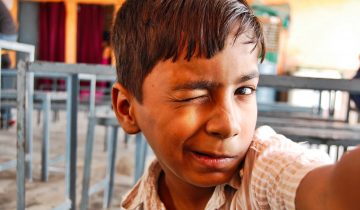The Woman Power in Indian Politics
In today’s era of modernization, women have made their presence felt in almost every field and politics is no exception. Although India is known for its male chauvinist society, the ice is now gradually breaking. Indian politics is now defined and governed by majority of women politicians. The current parliament has seen the highest number of female candidates in its history. All the major parties have strong ‘women wings’ which has a huge impact on large number of women voters and also allures women to join the political parties. On the grass root level one-third of the seats are reserved for women in Panchayats and they actively participate in the decision making. World’s respectable magazines like Forbes have put some of the Indian political women in their list of most powerful women.
Some of the big woman names in politics are Sonia Gandhi, Jayalalithaa, Mamta Banerjee and Mayawati. Jayalalithaa, Mamata Banerjee and Mayawati have expressed the desire to become Prime Minister. Ms. Gandhi, due to her nationality, is not fielding herself to become the Prime Minister.
Sonia Gandhi is the Chairperson of UPA, which presently runs the government. She ranked 21 in the Forbes list of Most Powerful People in the World, much above the Indian Prime Minister Dr.Manmohan Singh. Jayalalithaa and Mamata are current chief ministers of Tamil Nadu and West Bengal, respectively, while Mayawati is a former chief minister of Uttar Pradesh. They lead parties with massive bases and represent states more populous and electorally more important than frontrunner Narendra Modi’s Gujarat.
Women voters are projected to play a decisive role in determining the outcome in the 2014 general election.
Given such a context, each of the three leaders’ projection of herself in a national role is significant. But then the logical question is what makes them capable of playing a national role with much higher responsibilities. What’s their national agenda? And how are they positioned in the current race?
The Tamil Nadu chief minister broadcast her aspiration for a national role in a post-poll scenario when she addressed a rally last month from a dais modelled on the parliament building. Jayalalithaa is a three-time chief minister, who returned to power two years ago. A consummate politician, the AIADMK leader is also known as a “skilled” administrator. Under her leadership Tamil Nadu has become one of India’s biggest manufacturing hubs, especially for automobiles.
Similarly, in West Bengal, Mamata Banerjee has pitched for a national role. “After the elections, Trinamul will emerge as the third largest party in the country…The next government in Delhi will be a Trinamul-led one,” she pompously claims.
Mamata Banerjee has a clean image, known for her homespun lifestyle. Although the law and order situation has not been a happy one during her three-year rule, she has succeeded in stabilising the situation in the Maoist-dominated areas of Jangalmahal, as well as in the Darjeeling hills, which had been rocked by a statehood agitation.
In Uttar Pradesh, Bahujan Samaj Party (BSP) supremo and former chief minister Mayawati laid bare her prime ministerial ambition at a press conference, saying she would want to form a government at the Centre. “Our target in this Lok Sabha election is to become the balance of power at the Centre. If we achieve that, we would want to form our own government with the help of like-minded and secular allies,” she said.
When the Indian constitution came into being in 1950, women did hold key offices, albeit very few, these were of course elite women from political dynasties and set a trend that doesn’t seem to have changed since. The underrepresentation of women therefore automatically allots them an inferior status and makes them second class citizens prone to exploitation as women are still not actively involved in the decision and policy making of this country in proportion to their actual numbers. Thus, there is a void between the idea of women’s participation and the constructive use of that power.



